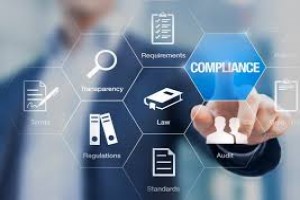Description
Date
1st Batch: 6th – 8th Mar, 2025
2nd Batch: 29th – 31st May, 2025
3rd Batch: 25th – 27th Aug, 2025
4th Batch: 8th – 10th Dec, 2025
Event Details
OBJECTIVE
At the end of this training course, you will learn to:
- The role and responsibilities of the compliance function, including the designated Compliance Officer roles, and the skills needed to successfully discharge these
- The issues to be considered in developing compliance policies and procedures
- A variety of core pieces of legislation which are relevant to the compliance function
- Key risk areas, including money laundering, cyber-crime, bribery and corruption, data protection loss and financial services regulation
- Best practice risk management techniques
CONTENT
Understanding Risk, Statutory, Legal and Regulatory Compliance
- What is effective legal and regulatory compliance?
- Prudential Compliance
- What are the objectives of compliance?
- What is integrity in the eyes of the regulator?
- Managing Regulatory Compliance in a Dynamic Environment
Regulators and their Power
- The Role of the Regulator
- Regulatory Models
- Enforcement
- Regulatory Rules
- The Framework of a Regulator
- The Potential Liability of Regulators
Understanding the Legal and Regulatory Environment
- The Need for, and objectives of Law and Regulation
- Sources of Law and Regulation
- Prevention of Money Laundering and Financial Crime
- Understanding Money Laundering Offences
- Designing an Effective Reporting System
- Terrorist Financing
- Money Laundering and Tax Evasion
- Financial Crime
- Preventing Fraud
- Corruption
- Market Manipulation / Misleading Statements, Insider Dealing and Market Abuse
Industry Knowledge and Awareness
- Codes of Corporate Governance
- Regulatory Principles
- Overview of Commercial Laws and Mechanisms Governing Legal Persons and Arrangements
- Regulators
- Coursess and Services
The Role of the Compliance Officer
- Compliance Structure
- The Role of the Compliance Officer
- Key Compliance Activities and Processes
- Risk-based Compliance Monitoring
- Investigating Compliance Breaches
- Training
Compliance in Practice
- Compliance Governance
- Internal and External Relationships
- Links between Compliance, Culture and Ethics
- Specific Internal Compliance Control Issues
- Risk Management
Key Compliance Issues
- Practical Considerations
- Compliance Oversight and Internal Controls
Legislation of Relevance to the Compliance Function: Risk Management
- Understanding where Disputes are most likely to Arise
- Understanding Regulatory Risk
- The Risk Management Process: What to remember when designing an effective risk management system?
- Opportunities and Threats from Risk Management Developments
- Dealing with Regulatory Issues and Enforcement
- Why risk management of legislative breach must be included in compliance framework?
- Key Risk Areas: Financial Crime and Money Laundering, Cyber-crime, Bribery and Corruption, Data Protection Loss
- Best Practice Risk Management Techniques
FOR WHOM:
Legal Officers and others who perform related functions
TRAINING METHODOLOGY
The training methodology combines lectures, discussions, group exercises and illustrations. Participants will gain both theoretical and practical knowledge of the topics. The emphasis is on the practical application of the topics and as a result participant will go back to the workplace with both the ability and the confidence to apply the techniques learned to their duties.





